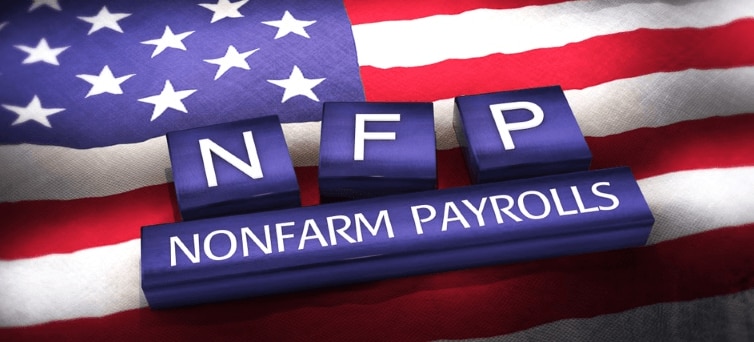In the absence of US markets for the 4 July holiday, markets in Europe were subdued yesterday, with the primary drivers continuing to be concerns over further trade escalations and expectations of additional central bank easing, with President Trump continuing to ratchet up the rhetoric on a number of fronts.
Earlier this week he took aim at China and the EU for manipulating their currencies, and said the US needed to be prepared to match them, in what could be construed as a dig at Federal Reserve chair Jay Powell.
This week we have seen improvement in some of the economic data out of Europe, but nothing to suggest a significant turnaround. Today’s German factory orders for May are expected to show an annualised decline of 6.3%, increasing the pressure on the ECB to cut rates further in the lead up to the September meeting. German bund yields are already pricing in that prospect with the 10-year yield now matching the deposit rate at -0.4%.
Today’s US non-farm payrolls report has the potential to upset the apple cart when it comes to whether or not we can expect to see a Fed rate cut later this month, and if we do whether it will be 25 or 50 basis points. Currently market pricing is at a 100% certainty that we will get some form of move from the FOMC when they meet at the end of this month, despite data that, while by and large is a little softer isn’t screaming 'economic slowdown'.
We already know that St. Louis Fed president James Bullard will vote for a 25bps cut, having already voted for one in June, and he’s unlikely to go beyond that given his recent comments that anything above that would be overdone. The big question is whether he can procure a majority view on the committee given that current voting members have been a lot less vocal than some other non-voting members, who have said they don’t see a cut as currently being necessary.
We can be pretty sure that Kansas City Fed President Esther George will be harder to convince given that in May she came out against a rate cut, and hasn’t said anything else in the meantime to alter that perception. The other members of the committee have also been pretty quiet on the issue merely saying that they were watching the data and there is a risk, particularly with US markets at all time highs that bond markets are mispricing expectations on a rate cut later this month quite badly.
Earlier this week the June ADP employment report showed that 102k new jobs were added, while the recent ISM reports for manufacturing and non-manufacturing painted a picture of a US economy that was still expanding, even though pricing pressures were subdued, particularly in manufacturing.
On employment the numbers are still solidly in expansion territory, and with unemployment already at multi-year lows, the central bank is more than meeting its mandate. On prices the picture is less clear, and with criticism from President Trump getting ever more strident, the pressure to cut rates has become more intense than ever.
If today’s non-farm payrolls data does rebound strongly from the 75,000 in May, with 160,000 expected, and wages edge higher to 3.2%, it will become much more difficult for the central bank to justify cutting rates, despite the pressure from the markets and President Trump. With expectations so skewed strongly towards rates being reduced, the downside risk here is of a rate rise getting priced back out, which could see bond markets slip sharply and yields spike.
Pressure on central banks is likely to be a key driver of how markets behave in the coming months, from the pressure of the US president on the Federal Reserve, to the clear politicisation of the European Central Bank if the appointment of Christine Lagarde comes to pas. There is the prospect that we could see what had until recently been rising tensions over trade, morph into a full-blown currency war, particularly since President Trump will want to do all he can to make sure that he is able to carry momentum for the US economy into 2020, when he goes for a second term.
EUR/USD – continues to look soft having failed to push through the 1.1400 level last week. A move back below 1.1200 opens up a return to the May lows at 1.1110.
GBP/USD – range-trading appears to be the order of the day. Support continues to prevail near 1.2500, with a break targeting 1.2430. Strong resistance remains up at the 1.2750 area.
EUR/GBP – we still have resistance near the 0.8975/80 area; however, the dips are getting shallower. A move through 0.9000 targets 0.9080. A move through the 0.8870 level could well open up a move towards the 200-day MA at 0.8780, with 0.8820 interim support.
USD/JPY – found support at the 106.80 area last week but needs to push back through the 108.80 area to retarget a move to the 109.20/30 area. Bias remains to the downside and the 106.00 area, while below the 109.20 area.
Disclaimer: CMC Markets is an execution-only service provider. The material (whether or not it states any opinions) is for general information purposes only, and does not take into account your personal circumstances or objectives. Nothing in this material is (or should be considered to be) financial, investment or other advice on which reliance should be placed. No opinion given in the material constitutes a recommendation by CMC Markets or the author that any particular investment, security, transaction or investment strategy is suitable for any specific person. The material has not been prepared in accordance with legal requirements designed to promote the independence of investment research. Although we are not specifically prevented from dealing before providing this material, we do not seek to take advantage of the material prior to its dissemination.






